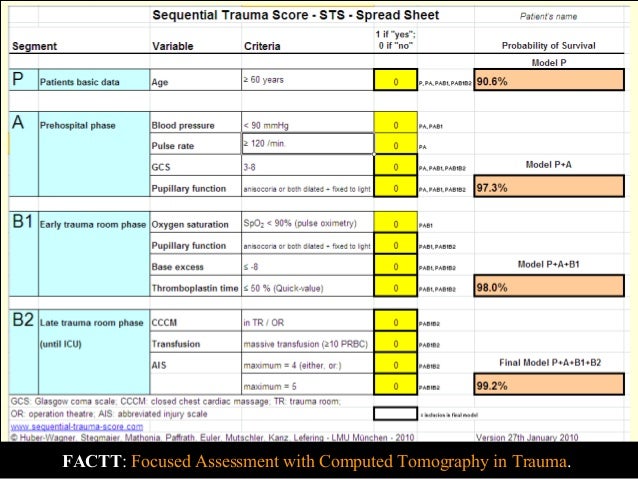
The clinician needs only to move the probe 1-2 rib spaces cephalad in the same coronal plane and to ensure the probe is in the mid-posterior axillary plane. In the trauma scenario, an assessment of the pleural space for blood is closely related to the abdominal upper quadrant views. For the pooling blood of hemothorax, this is the mid-posterior costodiaphragmatic recess. As with pneumothorax, the assessment for hemothorax interrogates the most dependent location for the intrapleural process. Thoracic trauma can result in bleeding within the thoracic cavity and lead to accumulation of blood in the pleural space. 17 Anatomic considerations in assessing for hemothorax Ultrasonographic assessment provides similar sensitivity to CT for detection of hemothorax. The assessment of hemothorax is now routinely incorporated into the FAST examination. Marginal improvement in diagnostic accuracy for clinically significant pneumothoraces is gained with the addition of multiple scanning regions, but additional sites of insonation may be beneficial in some clinical scenarios (e.g., prior to air transport, long delays in radiography). The anterior chest wall offers the most sensitive location for detection of large life-threatening pneumothoraces. This power to rule out pneumothorax offers significant diagnostic advantage in an unstable patient and underlies the rapid uptake of this modality for trauma and for any context of cardiorespiratory failure. The presence of lung sliding rules out pneumothorax at the site of the transducer with 100% accuracy. In the presence of pneumothorax, the two pleural layers are no longer apposed and sliding is absent as only the parietal pleura is seen (Video 2 available as ESM).

In a normal lung, the pleural line can be seen sliding as ventilation creates movement between the visceral and parietal pleura. 8).įull size image Pneumothorax image interpretation
#Focused assessment free#
Anechoic free fluid will be detected immediately posterior to the bladder in males and/or in the pouch of Douglas in females (Fig. Just as in all the other views, varying amounts of anechoic content will represent free fluid.
#Focused assessment for free#
Moving the probe subtly will allow imaging of the entire potential space in the search for free fluid. The urinary bladder should be visualized in the near field, and the uterus and/or the rectum will be seen deep to the bladder. For patients with Foley catheters, the creation of an acoustic window has been described by instilling fluid into the bladder retrograde through the catheter. Image quality relies heavily on the presence of an adequately filled urinary bladder.

To maximize sensitivity, acquisition of the pelvic image is performed in two planes (Fig. In females, fluid can be found collecting in the potential space between the posterior wall of the uterus and the rectum in the rectouterine space (pouch of Douglas). In males, the region lies in the rectovesicular pouch. The pelvic anatomy relevant to the FAST exam is more straightforward.


 0 kommentar(er)
0 kommentar(er)
